Surrealistic Romanticism of Classical Discipline 1940 - 1949
Gattorno's Exhibit Statement - 1944 Exhibit
"I am convinced that before long there will be a renaissance of good taste which will restore the prestige of good painting. This will undoubtedly represent a difficult task, since it must bring to an end a movement which has long served its purpose and which has since become more intolerant that the academism it set out to destroy. It is my belief that this new movement is predestined to embrace "Surrealistic Romanticism" of Classical discipline.
After many years of calculated changes, I have gradually returned to my early tendency in painting and it has been under this influence that I have prepared this group. For this presentation, I have deliberately treated one of my paintings in the "Double Image" formula. The subject involved compelled me to. I have done so without any fears of repercussion, since I do not consider such treatment a patrimony of any of my contemporaries. I trust that the balance of my work will confirm my adhesion to the movement in which I have faith."
Antonio Gattorno
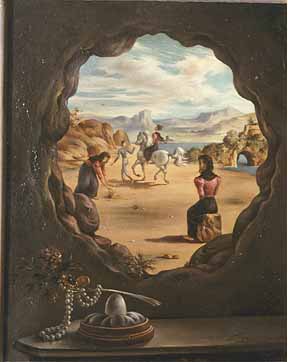
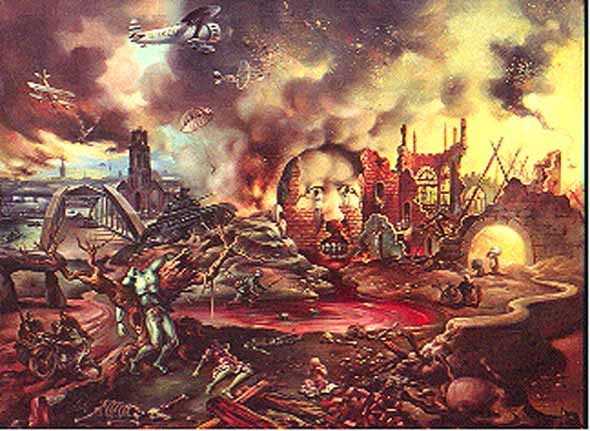
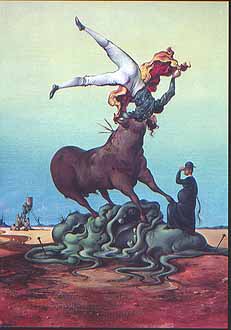
[L-R] "Outside of an Interior", "Hitler's Portrait", "Espana"
"Outside of an Interior" oil on linen - 1943
"Hitler's Portrait" Oil on canvas - 1942 Gattorno considered this visually arresting, highly unsettling image to be "a historical document" and perhaps his most socially important piece. Strongly reminiscent of Bosch and Goya, it stands with such works as Picasso's "Guernica" as a significant statement of horror and revulsion at the carnage which ravaged Europe in World War II. The composition of Hittler's face consists of hanging bodies, brick walls and smoke.
"Espana" (Spain) Oil on canvas – 1944 In her review of Gattorno's solo exhibit at the Passedoit Gallery on October 9, 1944, critic Emily Genauer said in the New York World Telegram, "Gattorno is a painter of extraordinary technical skill and uninhibited imagination. I could wish he did not suggest Dali as strongly as he does...Occasionally, however, Gattorno puts into his paintings a strength of conviction and a concern with world problems that sets them apart from Dali's dallyings. War Madonna, Italian Landscape and España are like that - and the best things at hand."
In this painting, Gattorno presents a discourse on the moral collapse of Spain. The gored matador represents the Spanish people, exploited by the clergy and victimized by the Church’s sanctioning of the politics of bloodsport. The cadaverous head upon which the subjects stand represents the moral decay of Spanish culture.

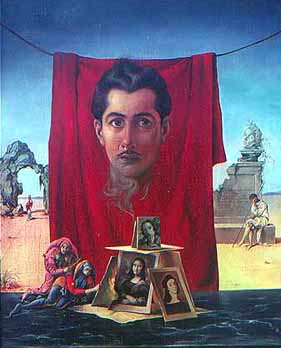
Classicism vs Buffoonery - 1943 Self-Portrait with Buffoons - 1946
Classicism vs. Buffoonery - This powerful painting of Gattorno's wife, Isabel, is one of the best examples of his phase which he referred to as "Surrealistic Romanticism of Classical Discipline".
Self-Portrait with Buffoons - Oil on wood panel - This humorously egotistical statement with its caricatures of Wilem deKooning and Jackson Pollock as buffoons burning the works of old masters, reflects Gattorno's involvement in the tumultuous New York City art scene of the late 1940's.
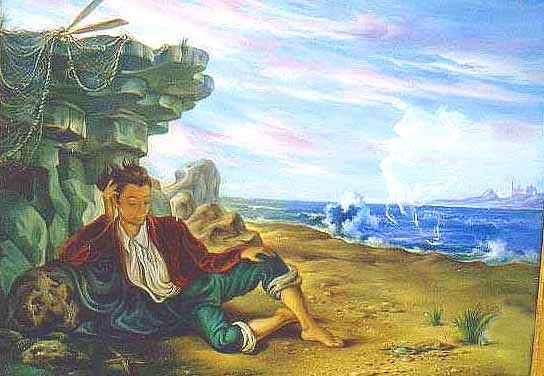 The Poet Fisherman - 1941
The Poet Fisherman - 1941
The Star Fisherman - 1942
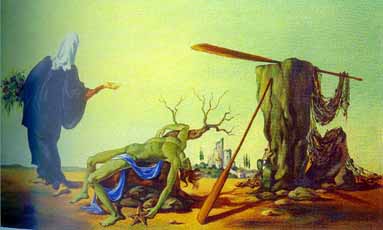
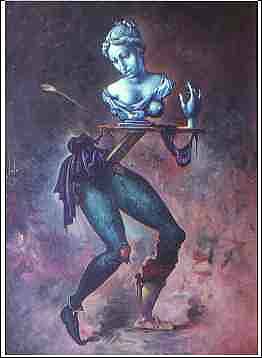

The Sorrentine Dancer - 1948 Memories of Rome - 1943
The Sorrentine Dancer Gattorno first explored his ideas of deconstructing the Sorrentine Dancer in a sketch dated 1945. He completed the oil painting in 1948. It deals with issues of deconstruction and objectification of art and subject matter. Willem deKooning explores similar ideas in his paintings of women from the same era. But while deKooning shocks the viewer by establishing a style that appears to abandon technique Gattorno uses technique to create a more subtle yet equally distorted vision that seems somewhat less misogynistic.
Memories of Rome - Gattorno first saw Rome in 1920 when he arrived there as a sixteen-year-old student away from home for the first time. He was heavily influenced by Italian master-painters such as Giotto, della Francesco, and Titian. Twenty years later, as war ravaged Europe, Gattorno painted his “Memories of Rome”, paying homage to sources of inspiration as diverse as diChirico and Caravaggio. There is nostalgia in this painting as well as social and political commentary. It is simultaneously personal and universal in its various meanings and connotations both explicit and implied
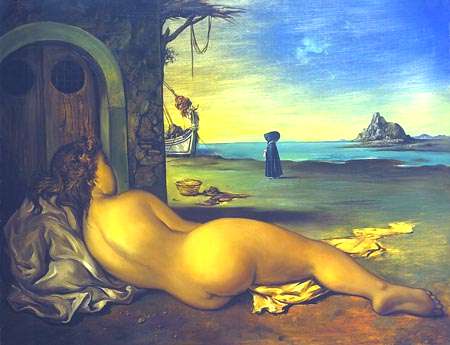
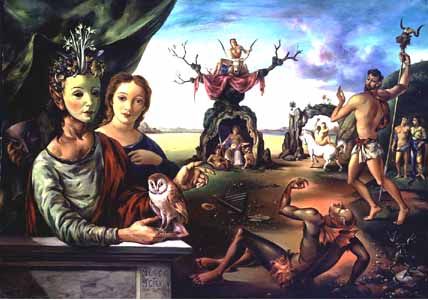
Saudades - 1945 Ommagio del Quattrocento - 1945
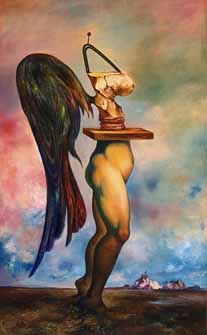
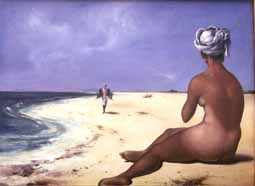
Woman Under Construction (to become a Muse) - 1948 Suntanned Venus - 1946
Woman Under Construction (to become a Muse) - Gattorno contributed his own visions to the ideas of deconstruction and objectification being explored and debated by the Abstract Expressionists of the New York School during the late 1940’s. Gattorno, with his strong sense of humor and irony, made use of the very same classical techniques that many of his contemporaries sought to eschew. Here Gattorno’s disassembled woman, though arranged according to the artist’s whim, is re-constructed with a definite affection for the feminine form and an appreciation of the necessity of feminine energy in the universal sense. Her torso is firmly rooted in feet that grow directly from mother Earth. Her headless bust, sprouting a beautifully rendered pair of wings, perches atop a sculptor’s table, as if upon a pedestal.
Suntanned Venus This was painted following Isabel’s first visit to Cuba in the spring of 1946. Antonio’s brother Francisco, who was called Paco, had a home at Veradero Beach. There are numerous photographs of Isabel and Antonio relaxing at the shore. Although the artist painted the suntanned Venus as a nude, the model was not.



The Sorrentine Dancer - 1948 Memories of Rome - 1943
The Sorrentine Dancer Gattorno first explored his ideas of deconstructing the Sorrentine Dancer in a sketch dated 1945. He completed the oil painting in 1948. It deals with issues of deconstruction and objectification of art and subject matter. Willem deKooning explores similar ideas in his paintings of women from the same era. But while deKooning shocks the viewer by establishing a style that appears to abandon technique Gattorno uses technique to create a more subtle yet equally distorted vision that seems somewhat less misogynistic.
Memories of Rome - Gattorno first saw Rome in 1920 when he arrived there as a sixteen-year-old student away from home for the first time. He was heavily influenced by Italian master-painters such as Giotto, della Francesco, and Titian. Twenty years later, as war ravaged Europe, Gattorno painted his “Memories of Rome”, paying homage to sources of inspiration as diverse as diChirico and Caravaggio. There is nostalgia in this painting as well as social and political commentary. It is simultaneously personal and universal in its various meanings and connotations both explicit and implied


Saudades - 1945 Ommagio del Quattrocento - 1945


Woman Under Construction (to become a Muse) - 1948 Suntanned Venus - 1946
Woman Under Construction (to become a Muse) - Gattorno contributed his own visions to the ideas of deconstruction and objectification being explored and debated by the Abstract Expressionists of the New York School during the late 1940’s. Gattorno, with his strong sense of humor and irony, made use of the very same classical techniques that many of his contemporaries sought to eschew. Here Gattorno’s disassembled woman, though arranged according to the artist’s whim, is re-constructed with a definite affection for the feminine form and an appreciation of the necessity of feminine energy in the universal sense. Her torso is firmly rooted in feet that grow directly from mother Earth. Her headless bust, sprouting a beautifully rendered pair of wings, perches atop a sculptor’s table, as if upon a pedestal.
Suntanned Venus This was painted following Isabel’s first visit to Cuba in the spring of 1946. Antonio’s brother Francisco, who was called Paco, had a home at Veradero Beach. There are numerous photographs of Isabel and Antonio relaxing at the shore. Although the artist painted the suntanned Venus as a nude, the model was not.


